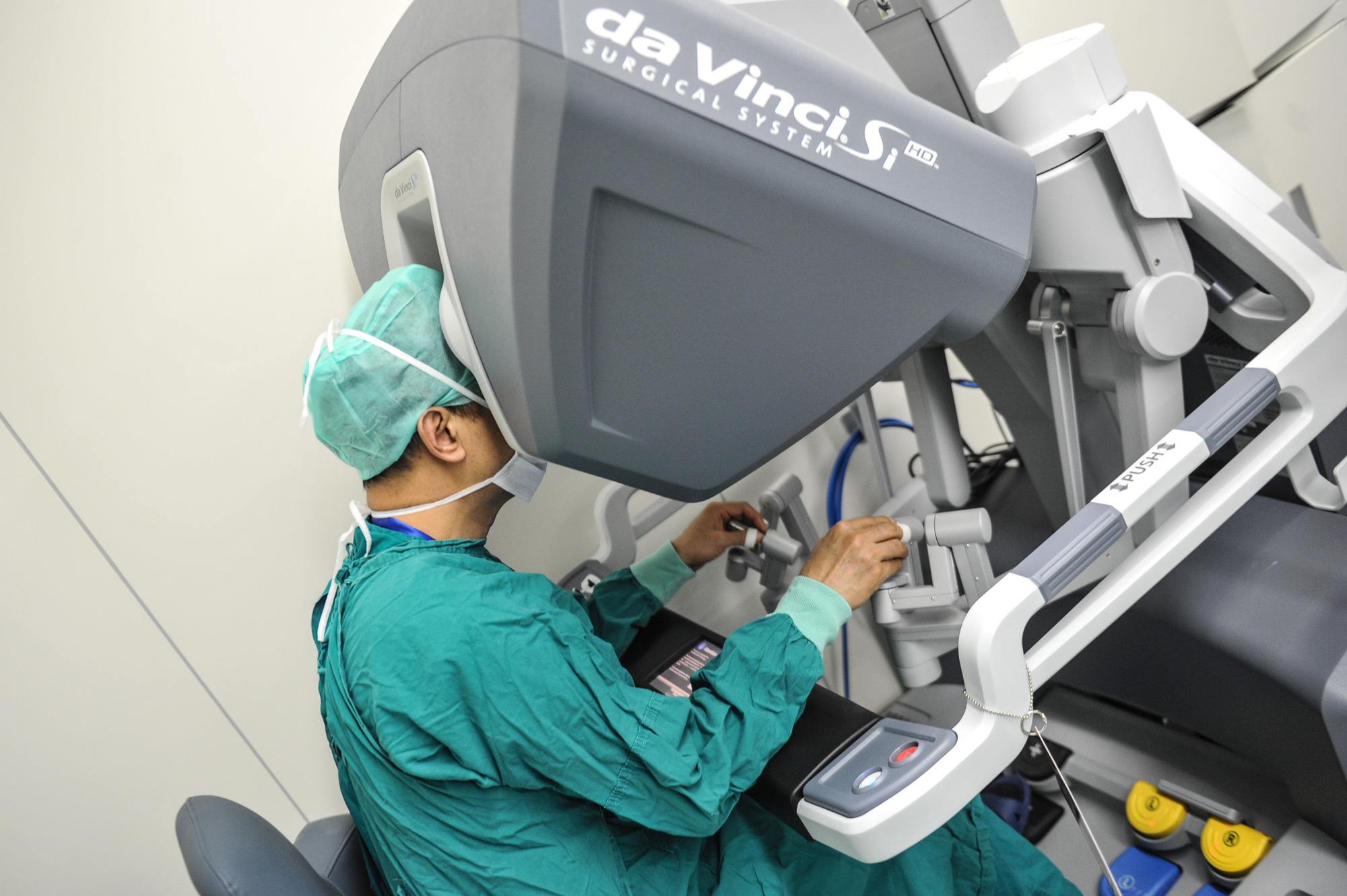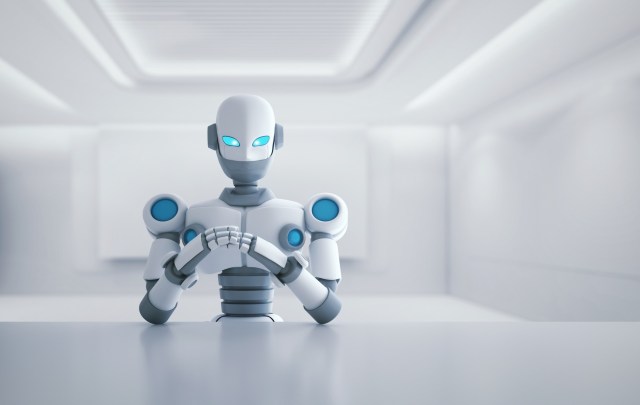
The closest that most patients ever get to a robot in the average NHS hospital is the Costa Coffee vending machine. Now, at last, this might be about to change. Last September a robot used a hot electrosurgical tool to cut pig tissue more accurately than a human surgeon.The samples of pig skin, fat and muscle bought from a local butcher showed less tissue damage as well.
The robot that performed this stunt was the called the Smart Tissue Autonomous Robot (STAR). It wasn’t a humanoid robot like we’re used to in seeing on screen. Instead, it was a one-arm machine that looked as though it belonged on the factory floor of BMW.
Nor was it completely autonomous. Using a near-infrared camera, the robot followed tiny marks that the researchers had placed on the tissue beforehand. A human was also needed to vacuum away the vapours from burning fat and tissue.
In 2016, the robot performed a similar stunt when it sewed together two segments of pig intestine with stitches that were more regular and leak-resistant than those of experienced surgeons.
For some – the surgeons themselves, perhaps; and those who harbour worrries about robot overlords – it is the stuff of nightmares. But to its creators, it is the future of surgery.
The heroic age of the surgeon, they believe, is coming to an end for the same reasons the age of the pilot and driver did. Robot surgery offers patients more precise and less invasive keyhole surgery than they get from a human with a scalpel, gown and mask. In time, whole new operations may become possible.
More precise surgery means faster operations, quicker recovery times and less chance of secondary infection – of vital importance with an ageing population and the spread of antibiotic-resistant infections. It is predicted that in some countries, 40% of the population may be over 65 by the middle of the century. And deaths from these opportunistic infections could amount to 50 million a year globally by 2050. The robots could save them.
Robotic surgery would also mean busier operating theatres and patients spending less time in hospital beds afterwards. It would make recruitment easier, when the predicted shortage of 100,000 doctors in the USA becomes a reality.
Once humans got over the fear factor, it would also mean fewer mistakes on the operating table. The researchers behind STAR believe that the autonomous features of their robot will develop in a similar way to the autonomous features that are now common on cars. Forward collision avoidance and lane detection were once novel features: now they are standard in the family car.
Likewise, they believe that robots like STAR will slowly take over specific functions from human surgeons until they eventually morph into fully autonomous surgical robots.
Well – that is what the engineers hope. Medicine is a notoriously conservative field. Worries over the safety of the hardware and unforeseen side effects of the surgery have a tendency to reduce innovation to a crawl. This in turn can eliminate competition and drive up prices.

For now, the dominant robot machine on the market is one that was approved 18 years ago, called da Vinci and made by Intuitive Surgical. It is probably better described as a robotic assistant as it is directed by the surgeon.
The surgeon controls the robot’s four arms via a 3D HD screen on a console, allowing her to operate with joysticksand a pedal; computers translate her movements into precisemovements of the robot’s micro-tools, offering greater precision than the human hand. The da Vinci has no autonomous features at all.
Nor are there many of them in existence. For pretty obvious reasons. Each costs an eye-watering $2m to buy and is large enough to fill a standard-sized room – permanently. Furthermore, the yearly maintenance charge can be close to $200,000. This is the robot for the 1%.
Happily, many of the over 650 patents that protect the technology of the da Vinci have recently expired or are due to expire soon, which should mean that cheaper generic copies will arrive at a hospital near you soon.
These copies won’t be the only new arrivals. We can expect quite a crowd of robotic assistants in the near future, given the size of the potential market that was last year valued at $3,000 million. In six years’ time, it is expected to be worth a whopping $11,000m.
Rushing in is CMR Surgical a British start-up keen to get in on the act. It has launched a robotic assistant called Versius, which has a set of independent, human-looking arms. Unlike the da Vinci, they are light enough to move from theatre to theatre. And they are much cheaper too. The Italian start-up Medical Microinstruments (MMI) has designed a robot intended for reconstructive microsurgery delicate enough to be used on babies. And Auris Health, from its patents, seems to have big ambitions to use to robotics to transform surgery. In all cases, this is man and machine in perfect harmony.
But there is a move to reduce human input behind all this. And, naturally, Google is already in on the act. Johnson & Johnson has teamed up with Google’s life-sciences division, Verily, to form Verb Surgical.Verb is developing a connected digital surgery platform that will incorporate robotics, visualisation, advanced instrumentation and machine learning. STAR’s developers, too, are pushing to make the robot fully autonomous.
It is difficult to imagine medical regulators agreeing to the kind of testing in surgery that has driven experimental self-driving vehicles on to our city streets, yet this would be the necessary step to accelerate the development of such a revolutionary technology.
As prices tumble, more companies enter the market and innovation increases, it’s clear that surgical robots now have the capability to revolutionise surgery for the 99%. But the question remains whether the regulators will let them.










Join the discussion
Join like minded readers that support our journalism by becoming a paid subscriber
To join the discussion in the comments, become a paid subscriber.
Join like minded readers that support our journalism, read unlimited articles and enjoy other subscriber-only benefits.
Subscribe